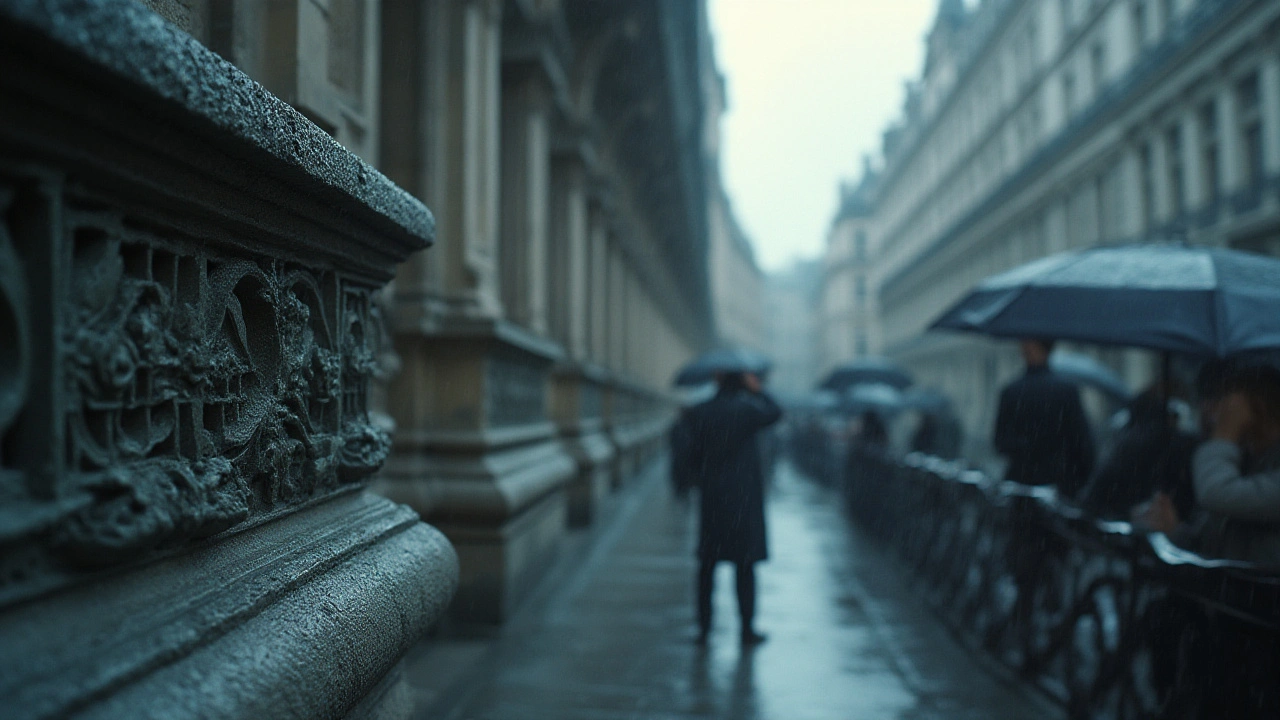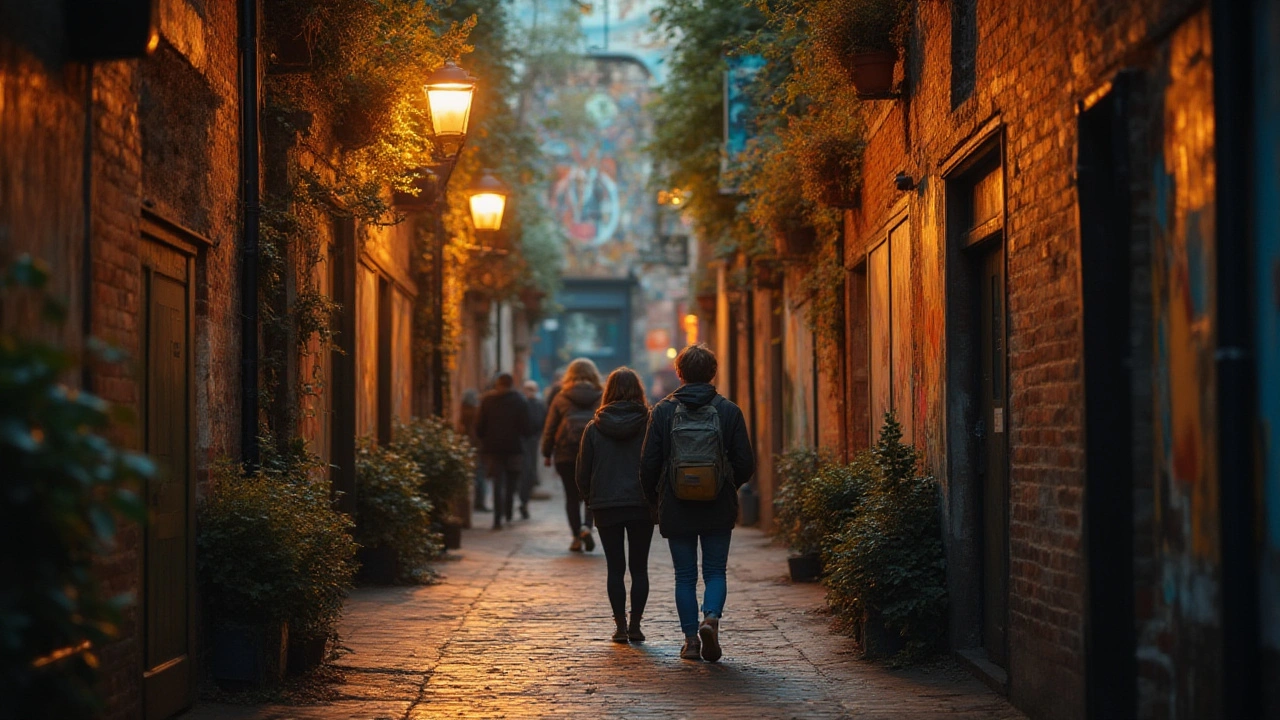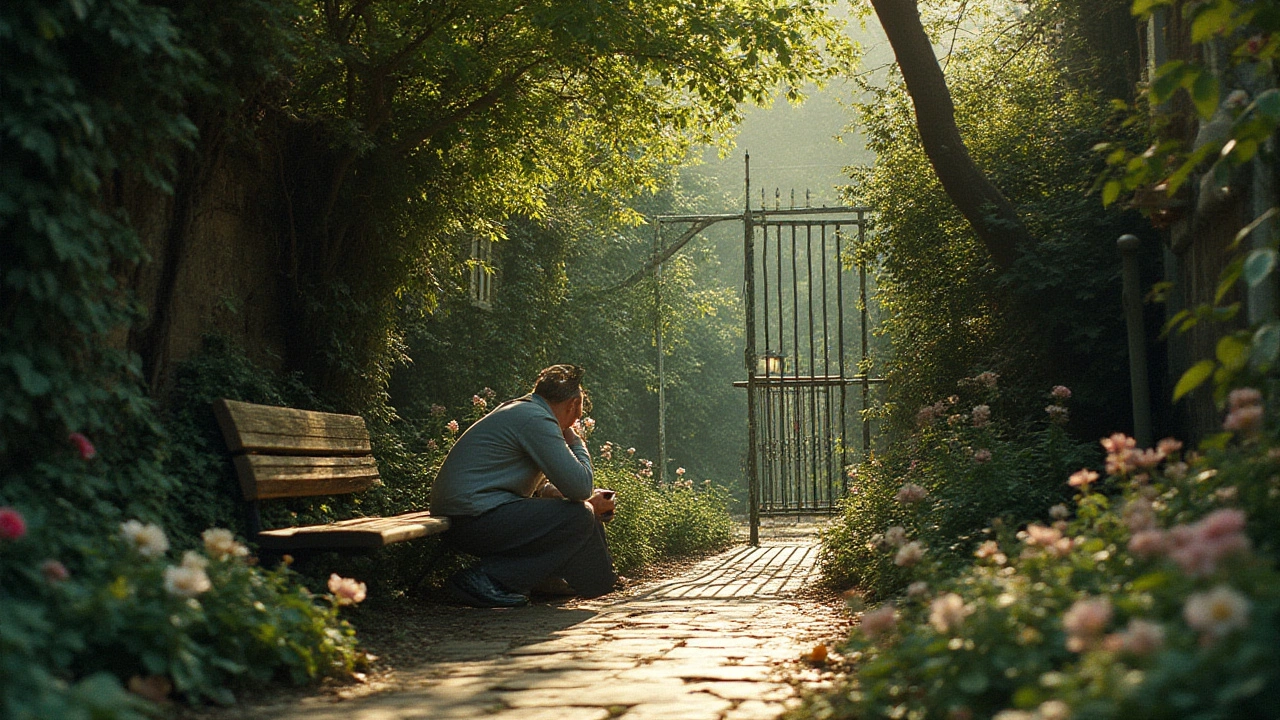Chasing that perfect snap in London can feel impossible when every other Instagram page looks like a carbon copy—Southbank’s cityscape, the classic Tower Bridge shot, and the never-ending blossom at Notting Hill. But what if the real magic sits out of plain sight, tucked behind railway arches, swirling beneath neon signs, or perched at the edge of canals that narrowboats hug as they meander through the city? London’s best photo opportunities aren’t always the ones plastered all over social feeds. They’re the hidden gems that locals walk by daily, where unexpected light and playful symmetry turn the ordinary into the unforgettable.
Discovering London's Lesser-Known Urban Landscapes
Step off the tourist treadmill, and you’ll find secret spaces where London rewrites its own story every hour. Take, for instance, the Leake Street Arches near Waterloo. Dive under the trains, and you’ll find a world painted bright by ever-changing graffiti. Street artists claim patches of bare wall for hours only to see their work vanish by dusk. If you’re after moody, intense portraits or candids glimpsed through clouds of spray paint, this tunnel serves up drama every single day. Most Londoners have heard of it, but wander through mid-week, and it’s peaceful—and the colours pop even more right after rain.
Just north, the Postman’s Park in the City hides in the shadow of St Paul’s but tells hundreds of stories with its Memorial to Heroic Self-Sacrifice. Each ceramic plaque is a photographer’s invitation: close-up details, textural shots, macro captures of weather-worn letters. The natural light sneaks between trees, especially after dawn, and gives every story a golden edge. It’s that interplay of shadow and history that makes even a phone snap snap-worthy here.
Another bolt of inspiration: St Dunstan in the East. It’s what happens when a bombed-out church meets London’s unstoppable greenery. Ivy splits through old stone, wildflowers break the cracks, and at sunset, the arches cast dramatic shapes that rival anything you’ll find at major London attractions. Bring a wide-angle lens for the best effect (or just back your phone into a bush), and try coming on a grey day—the texture only gets richer.
If you’re into brutalism or seeking that ‘Blade Runner London’ vibe, Trellick Tower and the Barbican rarely disappoint. From certain angles, the Barbican’s balcony gardens spill over raw concrete—ideal for architectural abstracts. Few places wear ‘70s urban nostalgia so honestly. Wander high-walks and spiral stairways; the interplay of straight lines and rotating shadow makes for powerful compositions. Most newcomers miss these trails, so set aside time to get delightfully lost.
Pocket Parks, Secret Gardens, and Unexpected Nature
It’s easy to see London’s parks as big open playgrounds—Greenwich, Hyde Park, Hampstead Heath—but the true ‘wow’ moments happen in the places barely marked on maps. Start with the Barbican Conservatory—a jungle pitched high above concrete walkways where giant cacti, ferns, and tropical flowers knot together in masses of green. If you’re after unique backdrops for portraits, this place bends light in a way that can give skin a kind of jungle glow. But book ahead, since the Conservatory’s only open for a handful of hours each week.
Then, out east, seek out Stave Hill Ecological Park in Rotherhithe. It’s reclaimed industrial land. Climb the wooden lookout at sunset or find the hidden ponds—water reflects the Shard and Gherkin on clear days. Plenty of Londoners have never heard of it, and it’s stunning in early autumn when the grasses turn ochre. For macro photographers, evenings in summer hum with dragonflies.
In Islington, the Culpeper Community Garden runs as a wild patch between estates, sprouting veg and wildflowers. You might spot locals reading or kids weaving through sunflowers, but it’s not touristy at all. Here’s a tip: shoot from a low angle to fill your frame with blossoms, or use the garden’s trellises to give depth to wider scenes. Different times of year offer strikingly different palettes—wisteria in spring, pumpkins in autumn.
If you’re up for a mission, London Wetland Centre in Barnes can hand you a wildlife fix with urban towers still visible in the far distance. Birders with cameras flock here in winter for the dramatic cloud formations over glassy water, but even in July, the golden light just before the gates close is magic. Don’t rush—keep your shutter down, and you’ll eventually snag a heron in flight or an urban fox tiptoeing past the reeds.

Unusual Perspectives: Rooftops, Views, and Underrated Angles
Everyone wants ‘that’ city view, but patience and local know-how unlock some of the best cityscapes. The Sky Garden is lovely, but queues and timed tickets don’t suit everyone, and sometimes you want more grit than glamour. Try the rooftop at One New Change; it’s free and has St Paul’s Cathedral larger than life, with the glass roof slicing modern and classic London in the same frame. In late afternoon, sunlight bounces off metal, and the dome turns golden.
Elsewhere, Peckham Levels stands above an old car park—six floors of gritty, neon-lit nightlife below, urban farms and murals all around. Head up for dusk, and London’s skyline is a jagged strip across the horizon, with the Eye and Shard poking above the rooftops. There’s a certain rough-and-ready magic here: the floors are sticky, the air smells like fried chicken, but your camera will love it.
For a twist on London’s riverscapes, don’t just stick with the Thames Path. The view from Vauxhall Bridge, looking east toward Battersea Power Station, pops at sunrise when chimney stacks billow out early morning steam. Or, if you want symmetry, head over to Albert Bridge at midnight. Pink and blue bulbs string the supports—catch them reflected in the water, especially after a little rain.
If you want to avoid tourists entirely, hunt out the hidden railway footbridges over Regent’s Canal between Camden and Hackney. Frames through iron railings make for interesting leading lines, especially if you time your shot with a narrowboat sliding underneath, leaving soft wakes behind. It’s peaceful, fresh, and utterly London without the bustle.
London’s Mysterious Markets After Hours
You haven’t really photographed London if you haven’t dug into one of its London photography marvels: the late-night or early-morning market. Forget Borough Market’s crowds at lunchtime—the real magic happens before sunrise, when traders light up their stalls and the air still smells like morning bread. Pick a quiet corner for subtle candids. Shoot from the hip, or zoom in on neon lights and freshly cut flowers. Late evening works too, as the stalls wind down and the overhead bulbs throw soft gold glows on wet cobblestones.
In East London, Columbia Road is famous for its flower market, but when the traders have packed up, and the old shop signs flicker, the street changes character completely. Graffiti, tumbled baskets, pastel doors—these make for moody, evocative frames. If you’re lucky and catch rain, puddles reflect every petal and brick, doubling your subjects.
Another secret: Maltby Street Market. Early mornings on weekends, before the artisan gin crowd arrives, give you light slanting down through restored railway arches and food trucks. Snag raw shots of bakers kneading dough, steam rising from coffee machines, or even a portrait series of the old-timers and their dogs. Go handheld and follow the rhythm—shoot as if you’re telling the story of breakfast in Bermondsey.
Out west, Portobello Road is a riot of crates and stallholders shouting over each other right after dawn. The Victorian terraces, graffiti-blasted shop fronts, and oddly theatrical street lights help here. If you have a fast lens, shoot with a wide aperture to blur out the background crowds. Find the fruit stalls, and get in close—texture, colour, and chaos combine in ways that formal cityscapes just can’t manage.

Photographing the Unexpected: Street Life, Events, and Fleeting Moments
Anyone who spends a week in London quickly learns the city’s not just about its buildings and parks—it’s about what happens between the cracks. Some of the most powerful photos come from fleeting moments: a busker’s sax echoing at Piccadilly Circus, a crowd cheering at Soho’s Pride parade, punks queuing at Camden Market, or the stunned silence when snow actually settles along Baker Street.
If you shoot street life, keep things simple. Don’t overload with gear; even a smartphone with the right framing nails the energy. Set your camera to burst mode if you want to grab authentic moments—people laughing, a dog bounding after pigeons, commuters bunched together against rain. Watch for reflections in puddles, shop windows, and even double-decker windows. These add layers to your scene and tell multiple stories in a single frame.
Get out during city events. London Marathon, West End Live, Notting Hill Carnival, or even the gentle madness of Trooping the Colour—each flips the city on its head for a day. Arrive early to scout your spot. For movement shots, bump up your ISO and play with shutter speed until you balance motion and blur. If you get right into the heart of it (think elbows in the crowd at Shoreditch’s street parties), you’ll need fast reactions and a willingness to look a bit silly.
Don’t ignore the quiet moments, either. Winter fog along the Thames, the hush of a Richmond Park morning, school kids swinging from banisters on a Clapham common. Sometimes, you get the best images when everyone else is still in bed. Tight angles, shallow depth of field, and natural light—all go far here. If you’re feeling lost, meet with other Londoners who shoot for fun—try groups like London Photo Walks, or even low-key meetups through Instagram hashtags like #LondonUndiscovered or #HiddenLondonShots.
And while it’s tempting to chase the same views, shake things up. Shoot at noon when shadows are harsh, or before storms for dramatic clouds. Choose black-and-white for markets, or exaggerate colours when you catch city lights glimmering after rain. London rewards curiosity, patience, and a bit of stubbornness. With the right eye, even an ordinary alley in Hackney or a windswept corner of Brixton turns iconic—for your lens, if not for yet another tourist guidebook.

